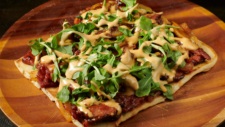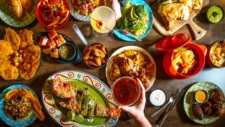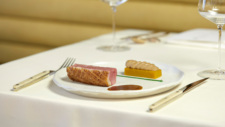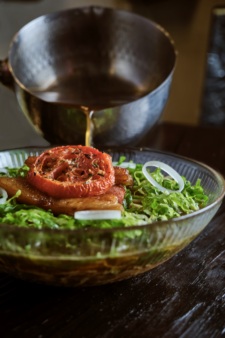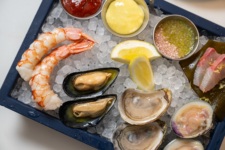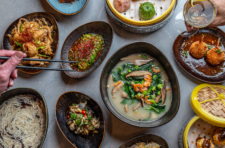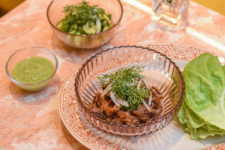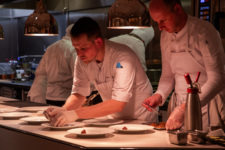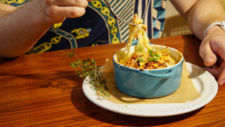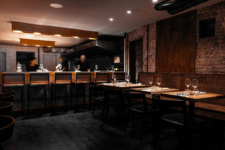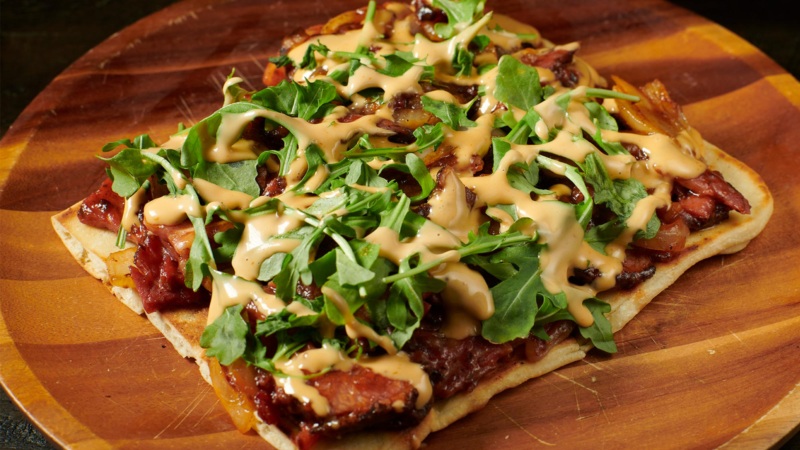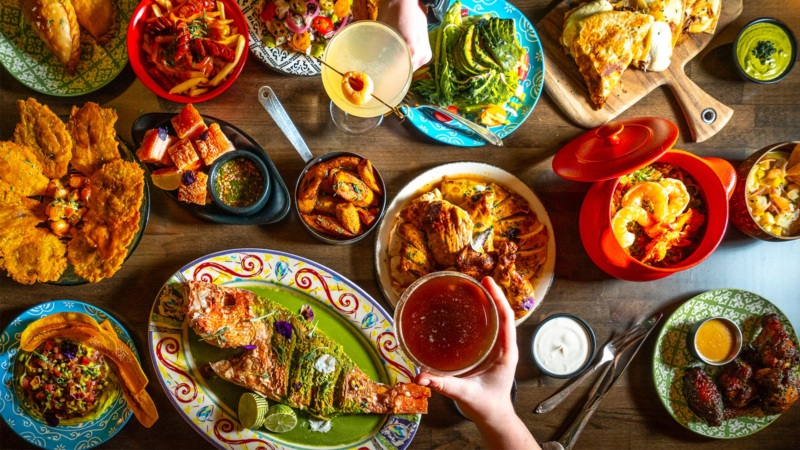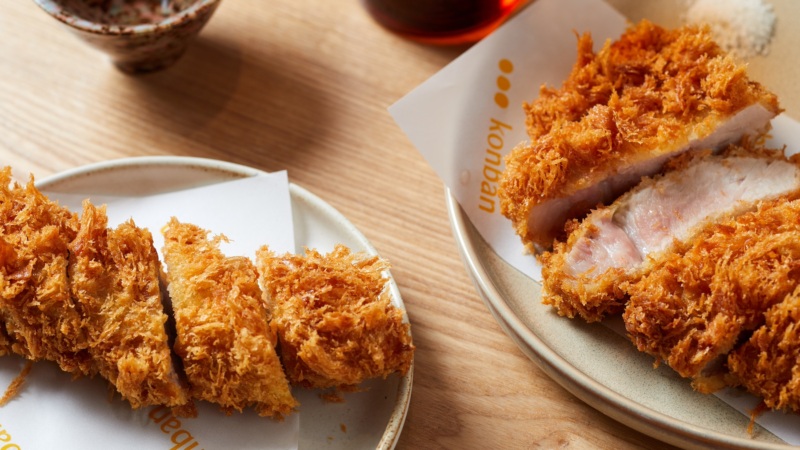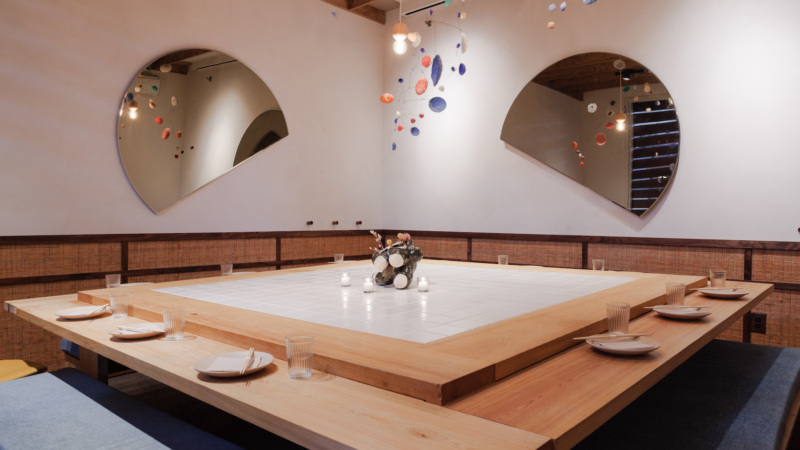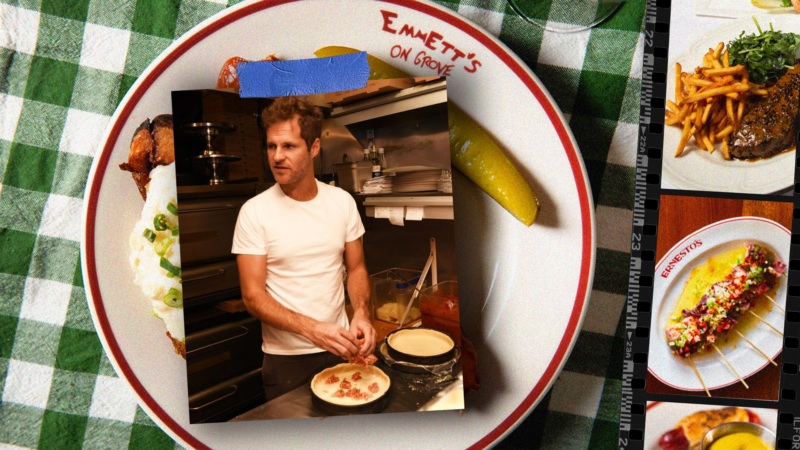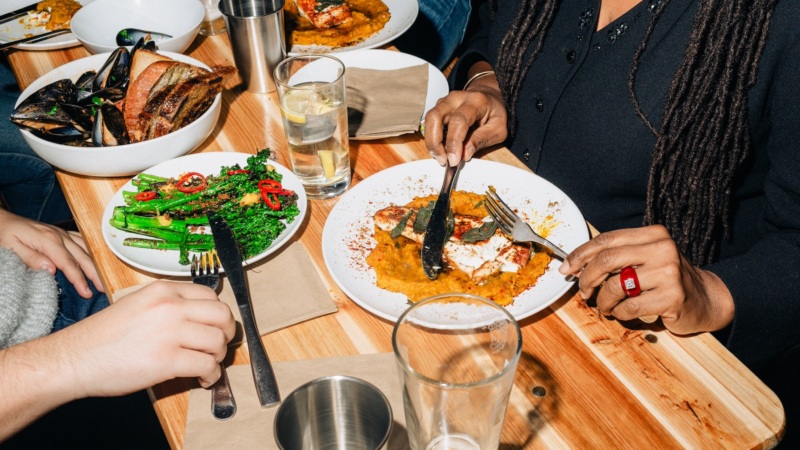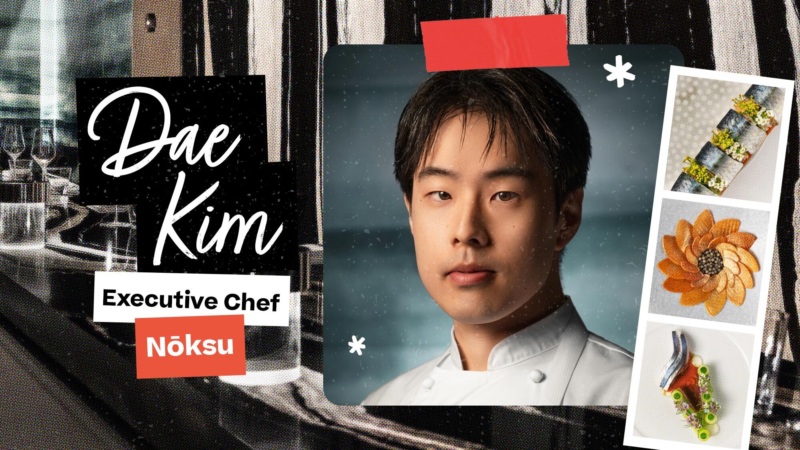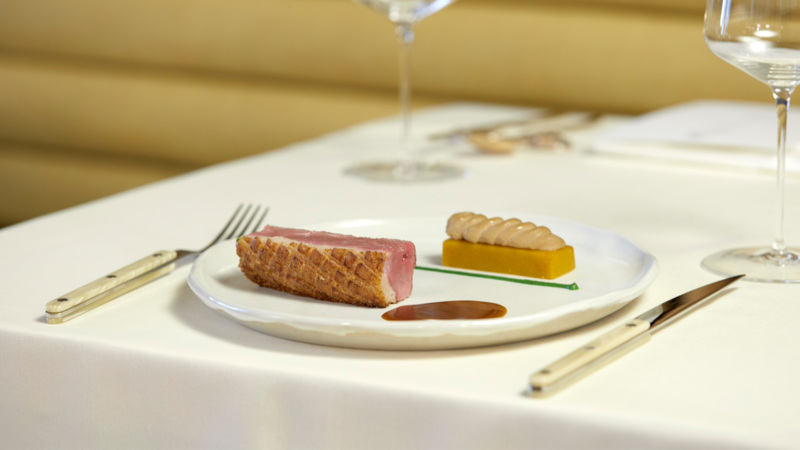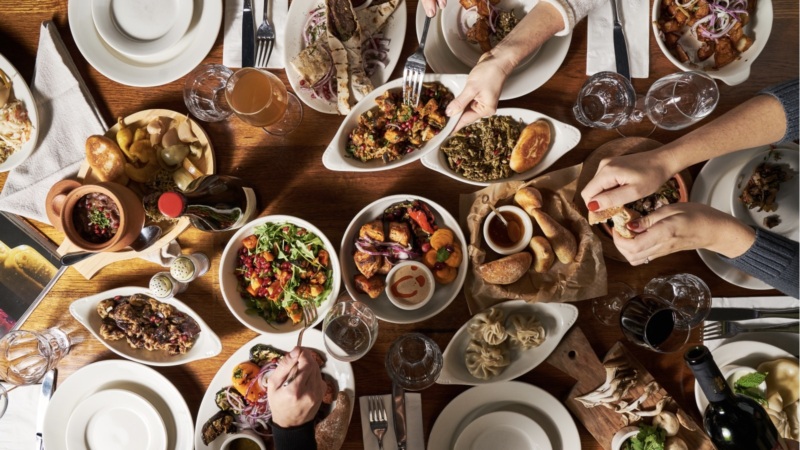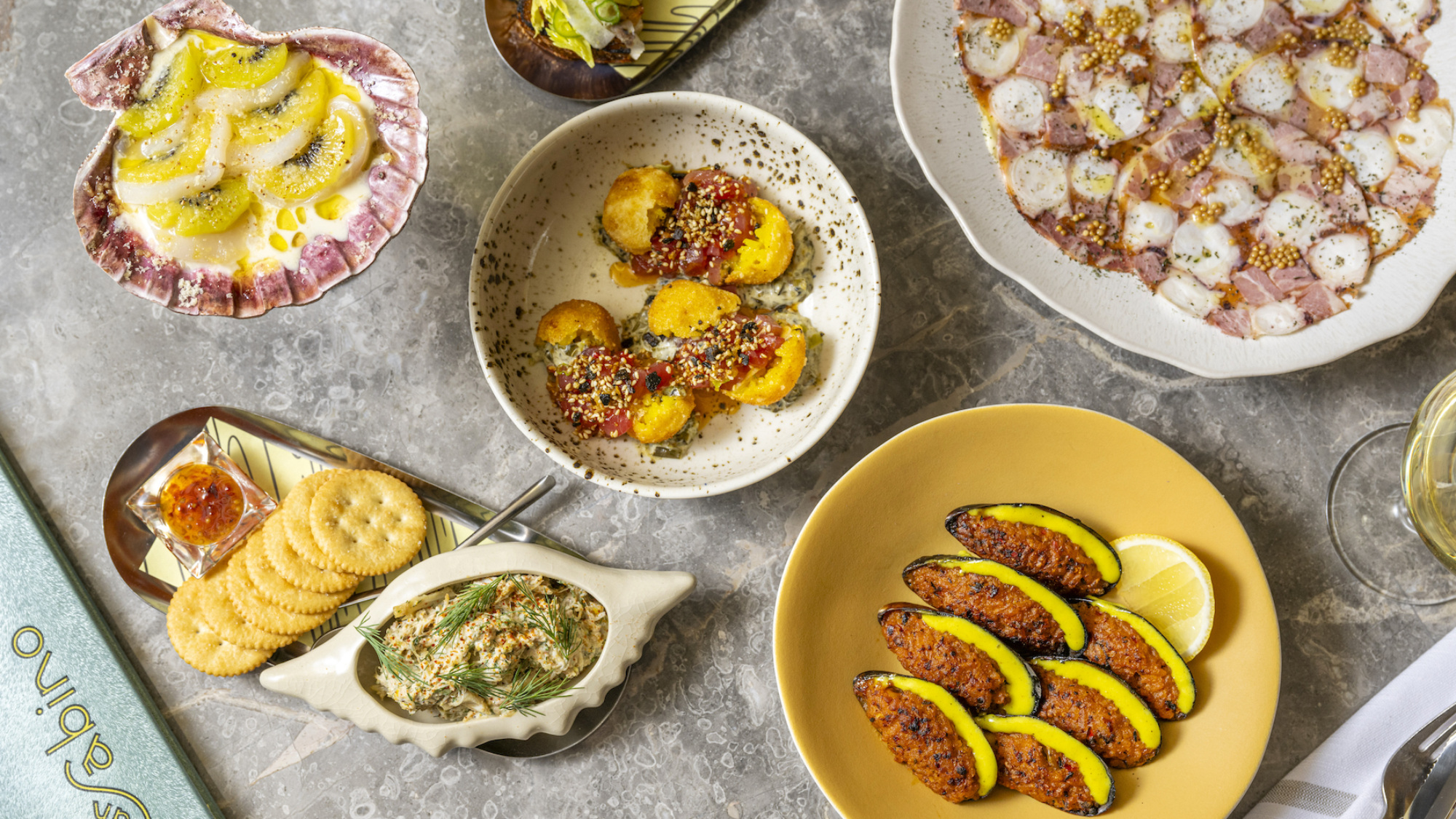
All About San Sabino, New From the Don Angie Team
Anticipation is running high for the opening of San Sabino, the new restaurant from Don Angie chefs and owners Angie Rito and Scott Tacinelli, and their second partnership with restaurateur Michael Stillman and Quality Branded. Before San Sabino officially opens on March 12th, we spoke with them about their newest project and — most importantly — what you should order for your first visit.
Here’s everything you need to know about San Sabino before you go. P.S. Reservations are live now.
1. You won’t have to go very far to get to San Sabino …
Because it’s next door to Don Angie. When Rito and Tacinelli found out that Benny’s Burritos at 113 Greenwich Avenue was closing and the space would soon be available, they jumped on the opportunity.
“It just made a lot of sense for us,” says Rito. “We could literally be in two places at once and have a second restaurant.” The fact that the space is also roughly the same size as Don Angie — San Sabino will have 55 seats, and Don Angie has 60 seats — and a corner space to boot, was another prime selling point.
“Corner spots are very hard to find, and the neighborhood is awesome,” she adds. “Our plan is to eventually open for lunch service as well, and we’ll get a lot of natural light in that corner.”
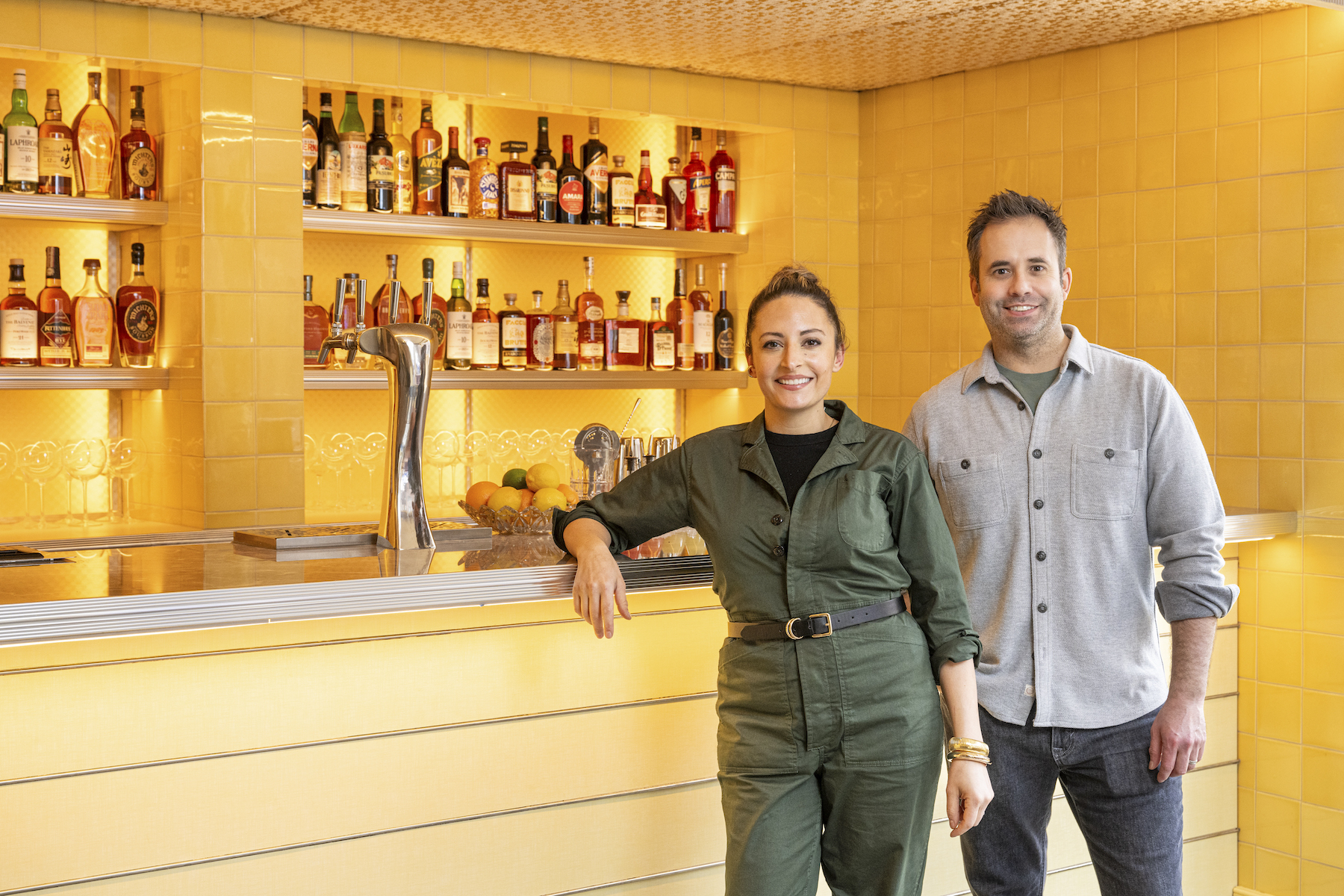
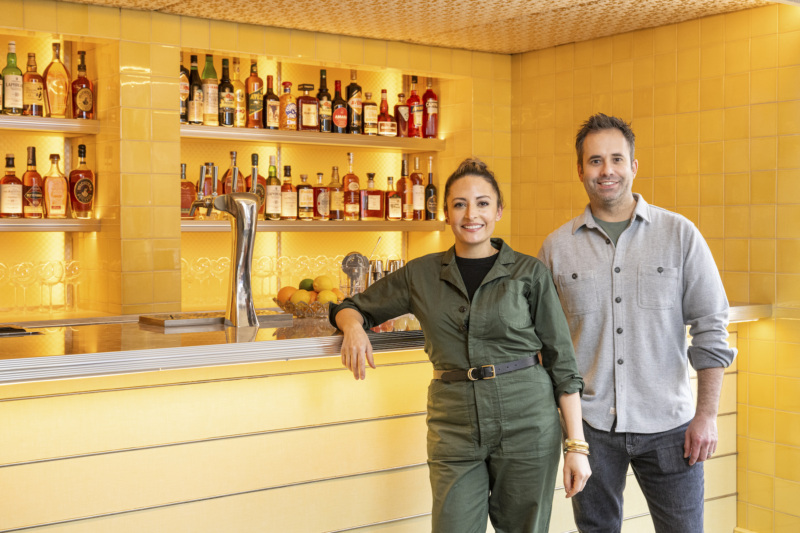
2. San Sabino is not another Don Angie …
But it’s still very Don Angie, if you will. Much like Don Angie, San Sabino references old-school Italian American restaurants — especially those that specialize in seafood, like Clemente’s in Brooklyn, Umberto’s Clam House in SoHo, and Randazzo’s Clam Bar in Sheepshead Bay — but it doesn’t always play by the same old rules or traditions. That’s why you’ll find dishes like shrimp parm, for example (more on that, later).
Rito and Tacinelli didn’t want to simply expand Don Angie in the former Benny’s Burritos space, either, because they wanted the creative freedom to create new recipes — and they didn’t want to “mess with the formula at all” when it came to Don Angie. “It’s become this iconic restaurant in just six years,” Tacinelli explains. “We have to pinch ourselves every day. We know that not every restaurant is like this, and we are very lucky to have this kind of success.”
Before settling on what would become San Sabino, they thought briefly about opening a pizza shop, or maybe even a clam bar. But a summer outing to the Jersey Shore pointed them in the direction of a seafood restaurant, with one big exception: It wouldn’t be yet another “coastal Italian” spot.
“San Sabino is very much in line with our style at Don Angie,” says Rito. “Playful. Fun. More American than anything. We’re drawing our influences from Italian American communities, like New Orleans where a lot of Sicilian immigrants ended up, or San Francisco, where many Italian immigrants ended up and were fishermen.”
3. The name has family ties.
“It’s hard to come up with a name that follows Don Angie,” Tacinelli explains, but ultimately, he and his wife, Angie, were inspired by his own grandfather. “We named the restaurant after the town my grandfather is from — Sanza, Italy — where everyone is named after the patron saint, Sabino.”
“His grandfather, Sabino, was one of the most inspiring people to him, in terms of food,” adds Rito. “So, it’s named after him, and it plays nicely with Don Angie,” Tacinelli says. “Sort of like a parallel,” Rito notes.
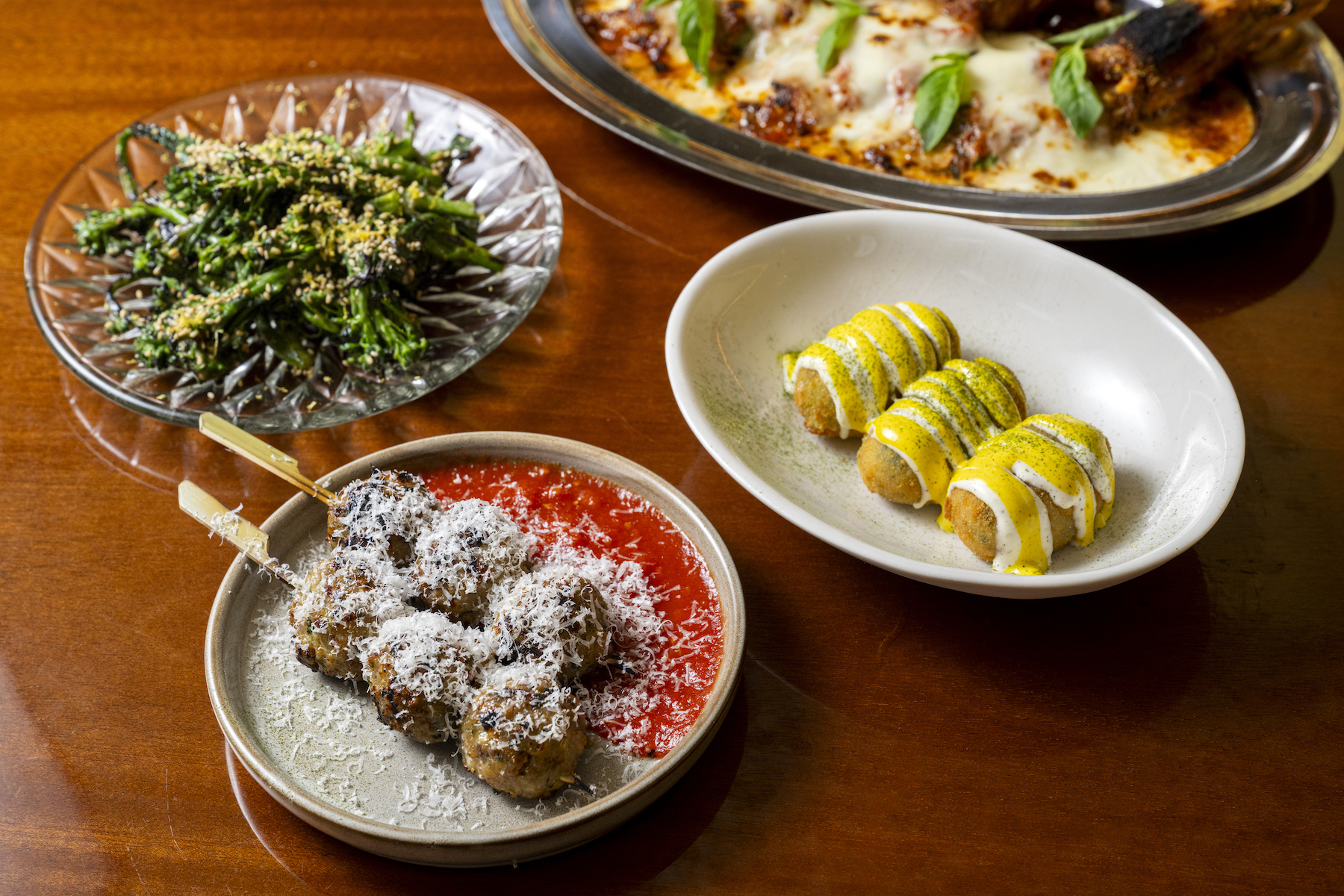
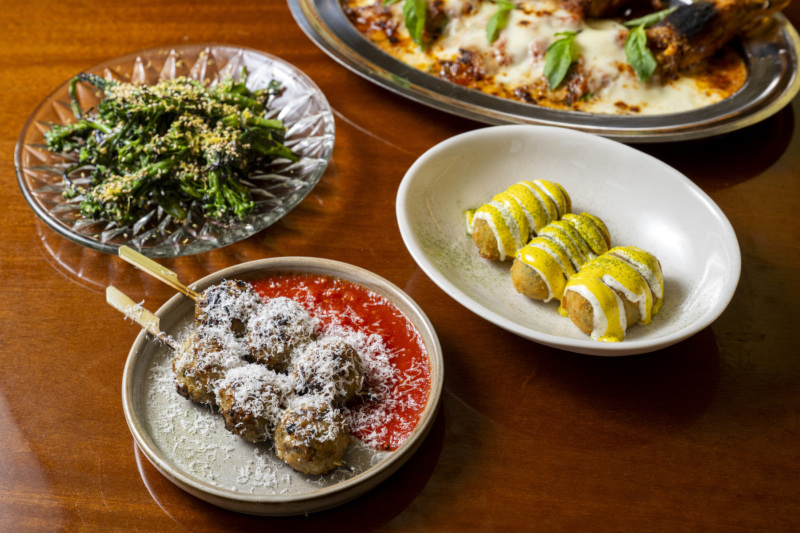
4. You don’t have to love seafood.
“This is a very approachable restaurant for the non-seafood lover, too,” Tacinelli explains.
That being said, the menu does lean heavily toward seafood, and on dishes that you likely won’t find anywhere else. Tacinelli and Rito looked at anything and everything for inspiration, from their personal travels to the Jersey Shore and restaurant meals at home and abroad. The partners, both in life and in business, have known one another for 16 years and have worked together for 10-and-half of those years.
“We’re really in sync, and we’ve been together for a long time,” says Rito. “Our palate is the same, and we’ve got this built-in sounding board at all times.”
5. But do consider these dishes on your first visit …
Crab & Mortadella Dip
Pistachio, dill, Ritz crackers ($18)
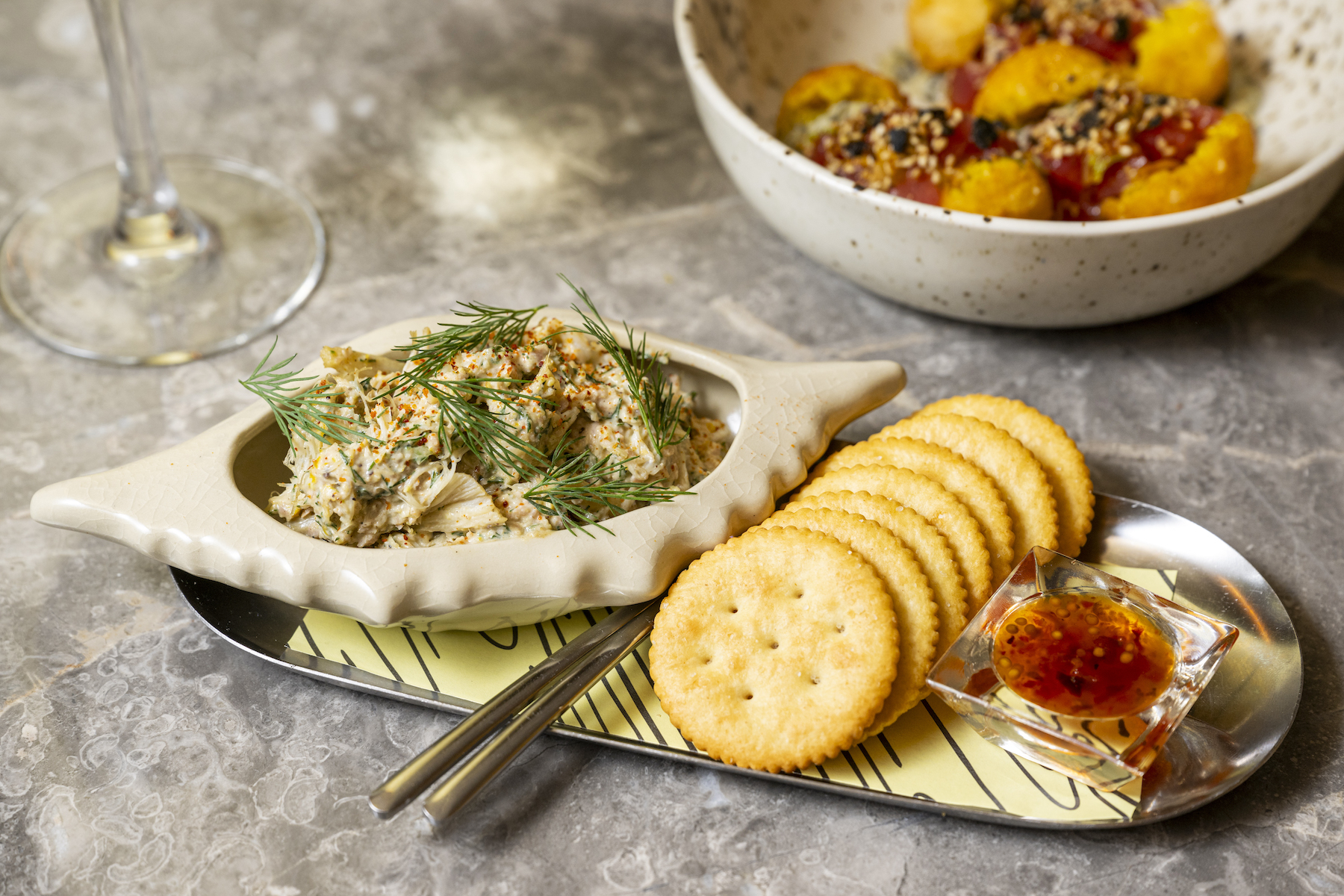

“It’s a riff on a retro crab dip, and a retro bologna dip from the ’50s,” says Rito. “It’s an amalgam of both of those things: whipped mortadella and pistachio mixed in with fresh blue lump crab meat from Maryland.” The mortadella is sourced domestically from Fra’Mani in Berkeley, Calif.
The idea to combine the two came from their similar flavor profiles. “The flavor profile of mortadella, with mace and black peppercorn, and all those warm spices, mirrors a lot of the spices you find in Old Bay seasoning,” Rito explains. “So, we kind of made our own Old Bay seasoning, with our own mix of spices and herbs, like mustard powder, to bring out everything in the crab and the mortadella.”
The dip gets served with Ritz crackers (“in true retro fashion,” adds Rito) and a hot cherry pepper jelly made with Italian cherry peppers, sugar, and mustard seeds. Scallions and dill top everything off.
Octopus Carpaccio
Spicy capocollo, garlic potatoes, grilled sourdough ($22)
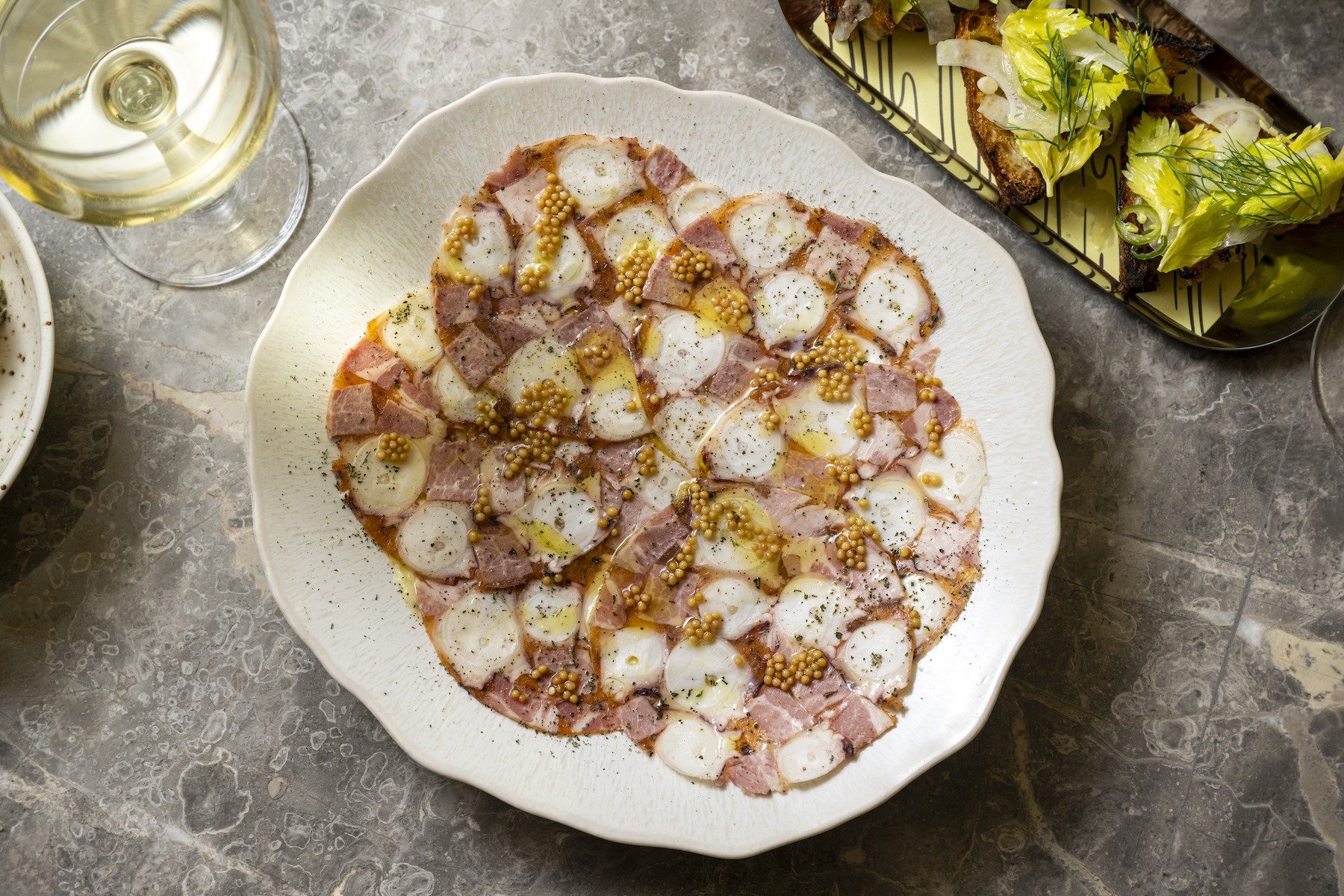
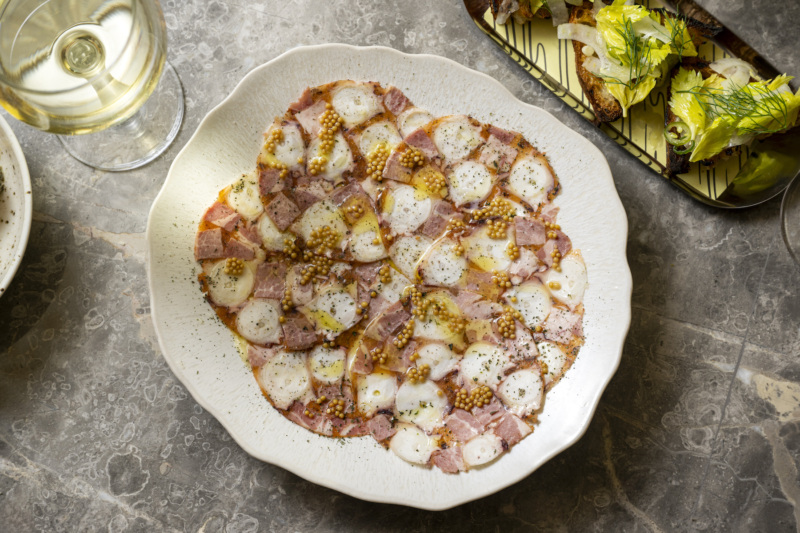
For this dish, cooks simmer octopus with aromatics and spices like paprika, and press it into a mold with pieces of capocollo, also from Fra’Mani, slicing it thinly. The idea to mix capocollo and octopus together came from one of their cooks during the R&D phase of the recipe. “We made a plain version of octopus carpaccio, and were adding spices to it when one of our cooks said it looked like capocollo,” Rito recalls. “So, then we decided to add capocollo to it. We kind of joked about it at first, but it made it so unique and different — it’s such a delicious flavor combination of smoky, salty flavors that goes so well with the octopus.”
The thinly sliced octopus and capocollo carpaccio is served atop a purée of garlicky potatoes. “We dress it on top with pickled mustard seed and this lemony olive oil, as well as oregano and black pepper. Grilled sourdough toast gets brushed with smoked paprika oil, garlic, and oregano, and topped with this shaved fennel and celery salad with pickled Serrano chiles.”
Insalata Louie
Dressed shrimp, avocado, and pepperoncini remoulade ($21)
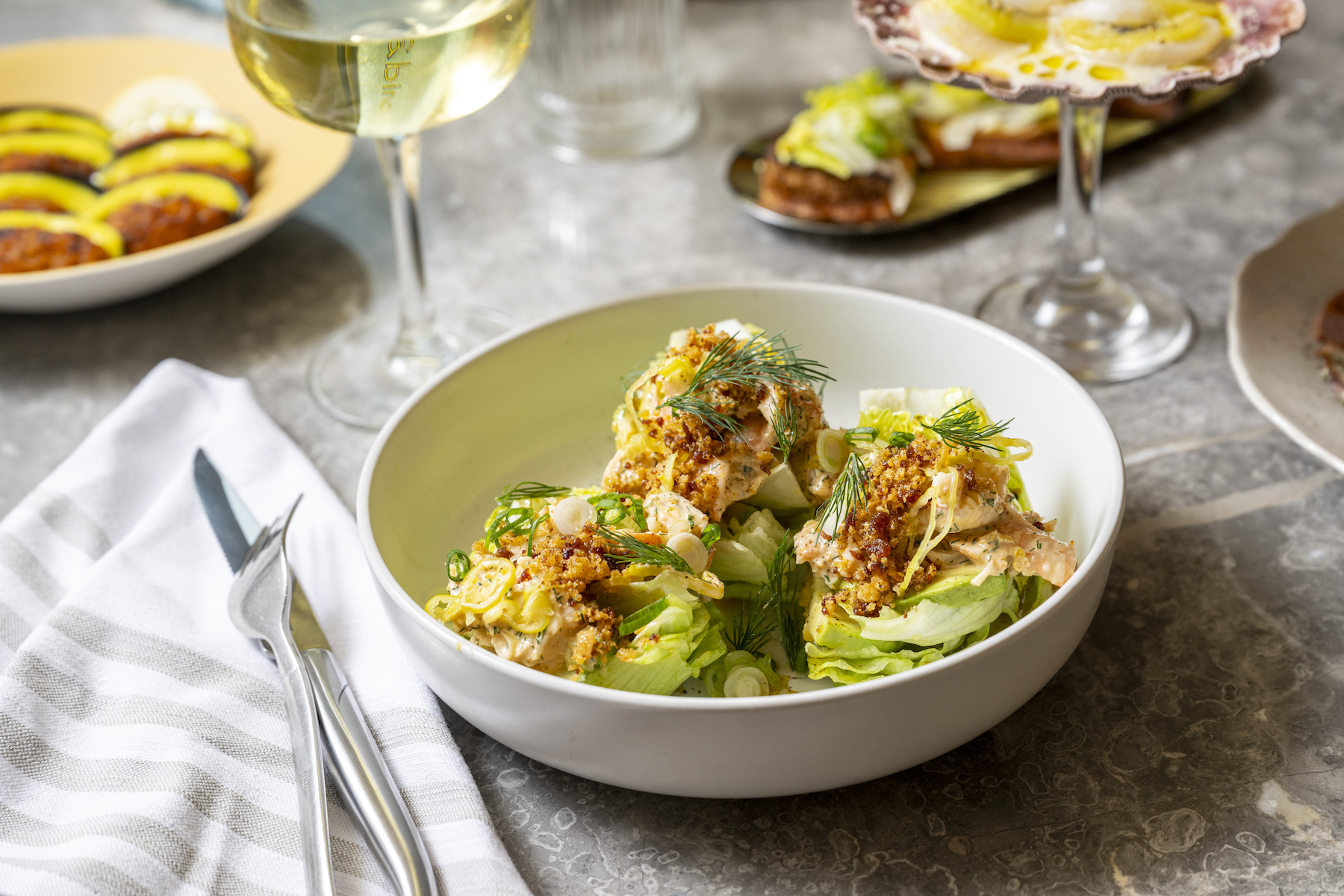
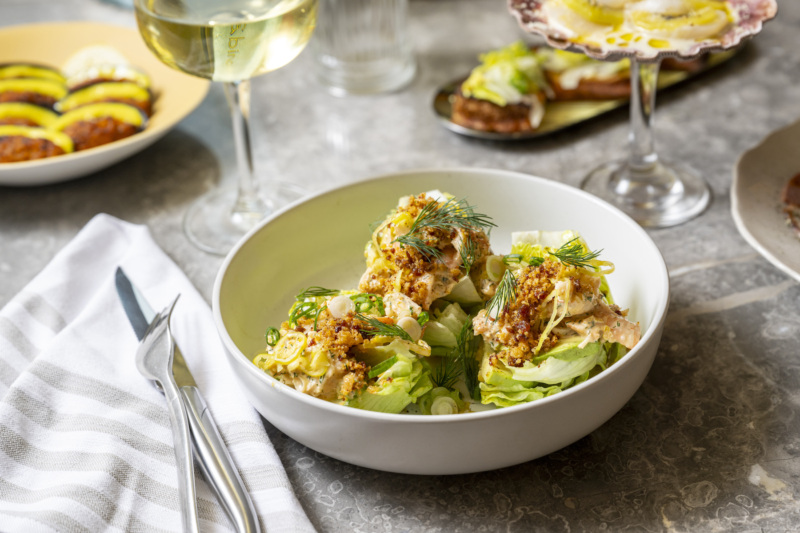
San Francisco classic, Scoma’s, known for their crab louis and shrimp louis, inspired this dish, which the couple describes as a spicy seafood wedge salad. “San Francisco is known to be a place where crab and shrimp louis originated,” Tacinelli says. “It typically has this hard-boiled egg and avocado and a mayonnaise dressing with horseradish, and we riffed on that here.”
At San Sabino, Texas pink shrimp gets tossed with a pepperoncini remoulade made with pickled mustard seed and horseradish (“it’s really intense,” says Rito) and it’s served with baby iceberg wedges. A spicy egg yolk cream made with sous vide egg yolks (“it’s a little more sophisticated”) as well as avocado gets tucked into the leaves of the wedges themselves. And instead of crispy bacon, they make crisp “breadcrumbs” from coppa sourced from Brooklyn Cured. “They’re almost like bacon bits.”
Lobster Triangoli
White vodka sauce, black garlic ($38)
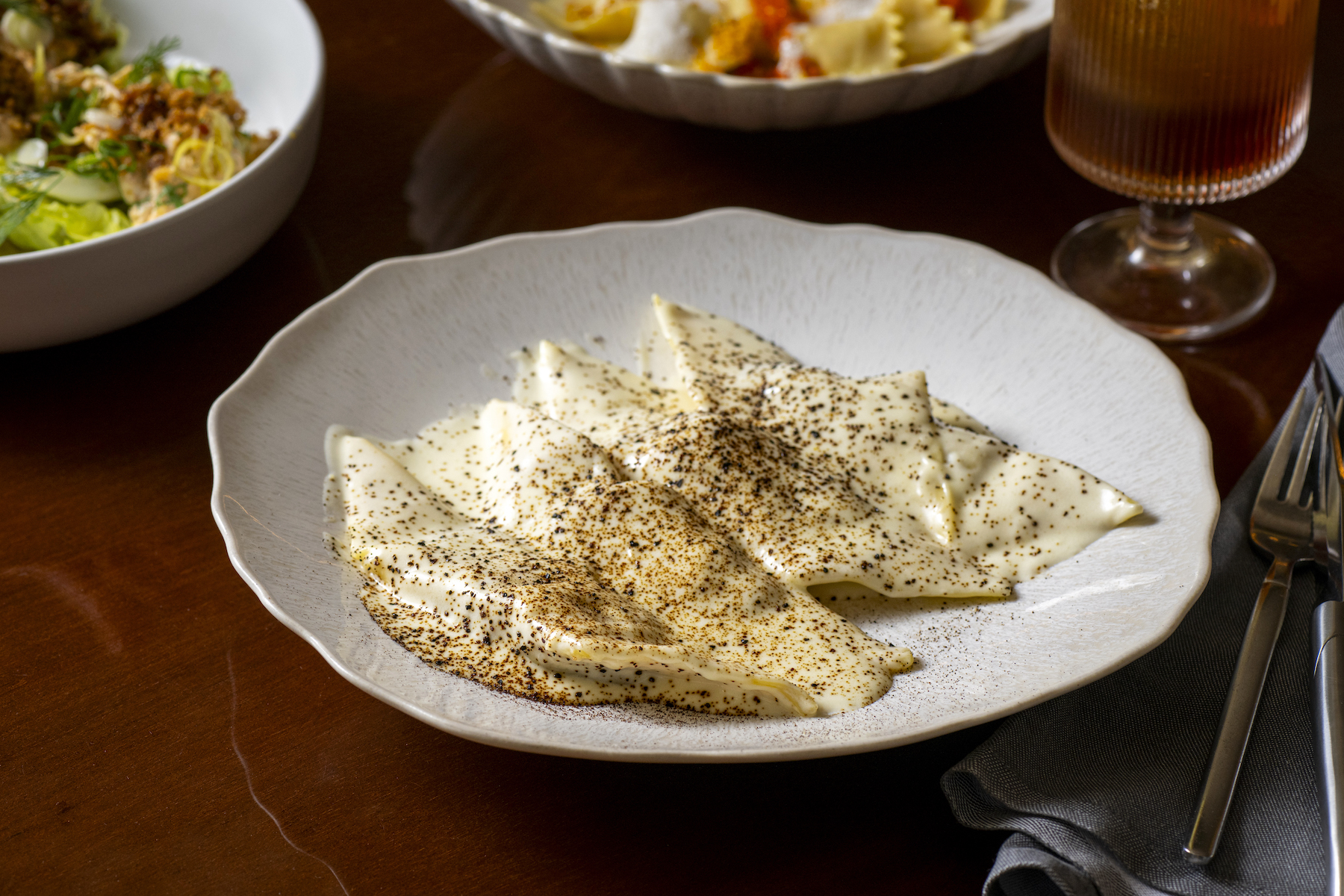
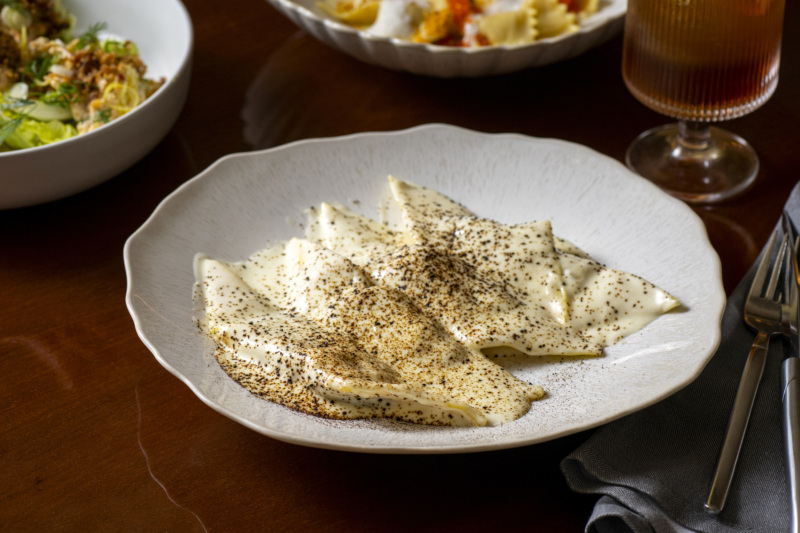
“Every Italian American restaurant, at least on the East coast, has a version of lobster ravioli in vodka sauce,” says Tacinelli, “and it’s so good, but it can often be a bit heavy.”
This dish, says Rito, is “a throwback to a big lobster raviolo” with pieces of handmade triangoli, filled with a spicy vodka sauce. She describes the vodka sauce as “deconstructed” because it’s a white cream sauce, sans tomatoes, that employs crème fraîche, butter, onions, shallots, and garlic. At the end, everything gets dusted with black garlic powder.
The pasta itself — all of which is handmade by Don Angie and San Sabino’s shared pasta team of about three cooks — is filled with chunks of fresh lobster in a spicy sauce made with tomatoes, chiles, oregano, basil, butter, shallots, and garlic. Lobster shells infuse the butter that’s also used in the dish to give it a deep crimson color. “When you cut into the pasta, it spills out this bright red lobster butter, oil, and sauce,” Rito explains. “It makes the dish look even more interesting, especially with the contrast of the white vodka sauce and the black garlic powder.”
Shrimp Parm
Sweet & sour arrabbiata ($38)

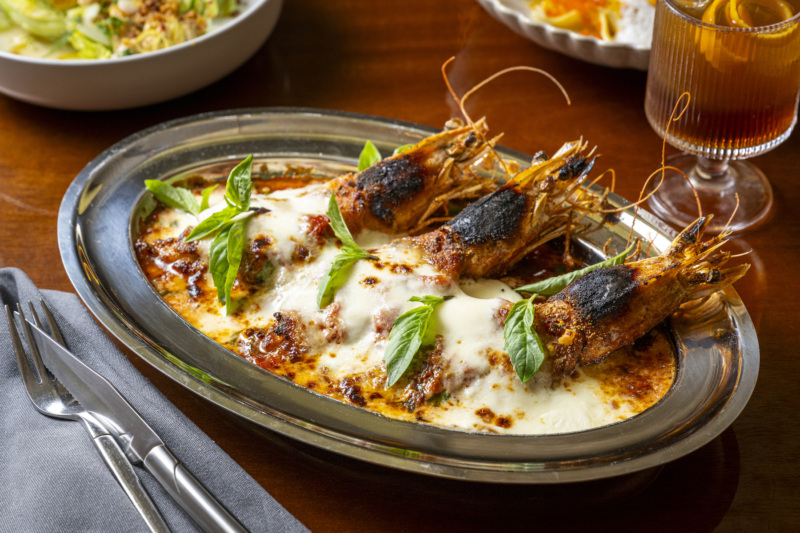
With this dish, Rito and Tacinelli defy classical Italian cooking rules. “You won’t find this in Italy whatsoever because Italians don’t love the idea of combining cheese and seafood often times,” explains Tacinelli, “but we bend a lot of the rules, if you will, when it comes to Italian cuisine, or regional Italian cuisine, which is all about rule following. We personally love and respect it, and that’s why Italian food has withstood the test of time, but our style is to kind of bend those rules.”
To create this dish, they knew they wanted to create the best possible version of shrimp parm imaginable. That meant using large, wild, head-on shrimp prawns sourced from Ecuador, and finding a cheese blend that was clingy, delicate, and textural enough to pair with it (they settled on stracchino, Parmigiano, and pecorino Toscano). And for the sweet and sour arrabbiata sauce, they use tons of garlic, Thai basil, vinegar, chiles, and sugar. “It’s really intense and punchy, and it pairs well with the seafood.”
It’s served with the shelled shrimp tail split, breaded, and fried, with only the head remaining. “People are welcome to do whatever they want to do,” Rito notes. “You can suck the juice out of the head, too. It’s choose your own adventure.”
And as they did with Don Angie’s famed pinwheel lasagna, Rito and Tacinelli nailed this dish almost from the start when they started developing it. “We did maybe three iterations,” Rito recalls.
Steak “Magazzino”
Anchovy chile crisp, pine nuts ($39)

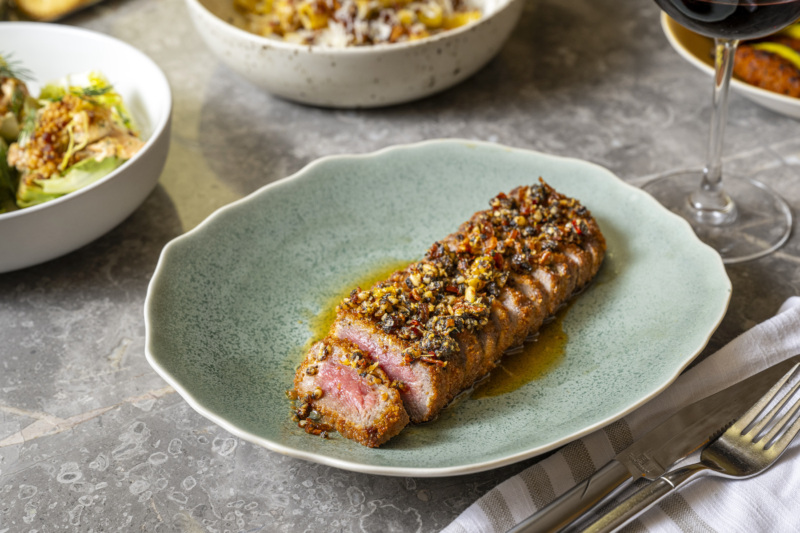
This dish is a loving tribute to the steak from Il Magazzino in Florence, Italy, which is breaded in an anchovy crust and fried, and served simply with a lemon wedge.
“What we are doing is an homage to that, but it’s also inspired by Japanese katsu,” Rito explains. “We bread the steak with a panko breading that has a bunch of spices in it, as well as parm, and then we cook the steak to a medium rare and top it with a really intense chile crisp that we make with anchovies, pine nuts, and several types of chiles. Underneath the steak, there’s a golden raisin purée, which is similar to the flavor profiles you find in steak sauces or a tonkatsu sauce. Golden raisins and anchovies and pine nuts are often used together in Sicilian cuisine, too. And there’s a fresh lemon wedge to add some bright acidity.”
Toasted Rice Panna Cotta
Sicilian pistachio, young coconut ($12)
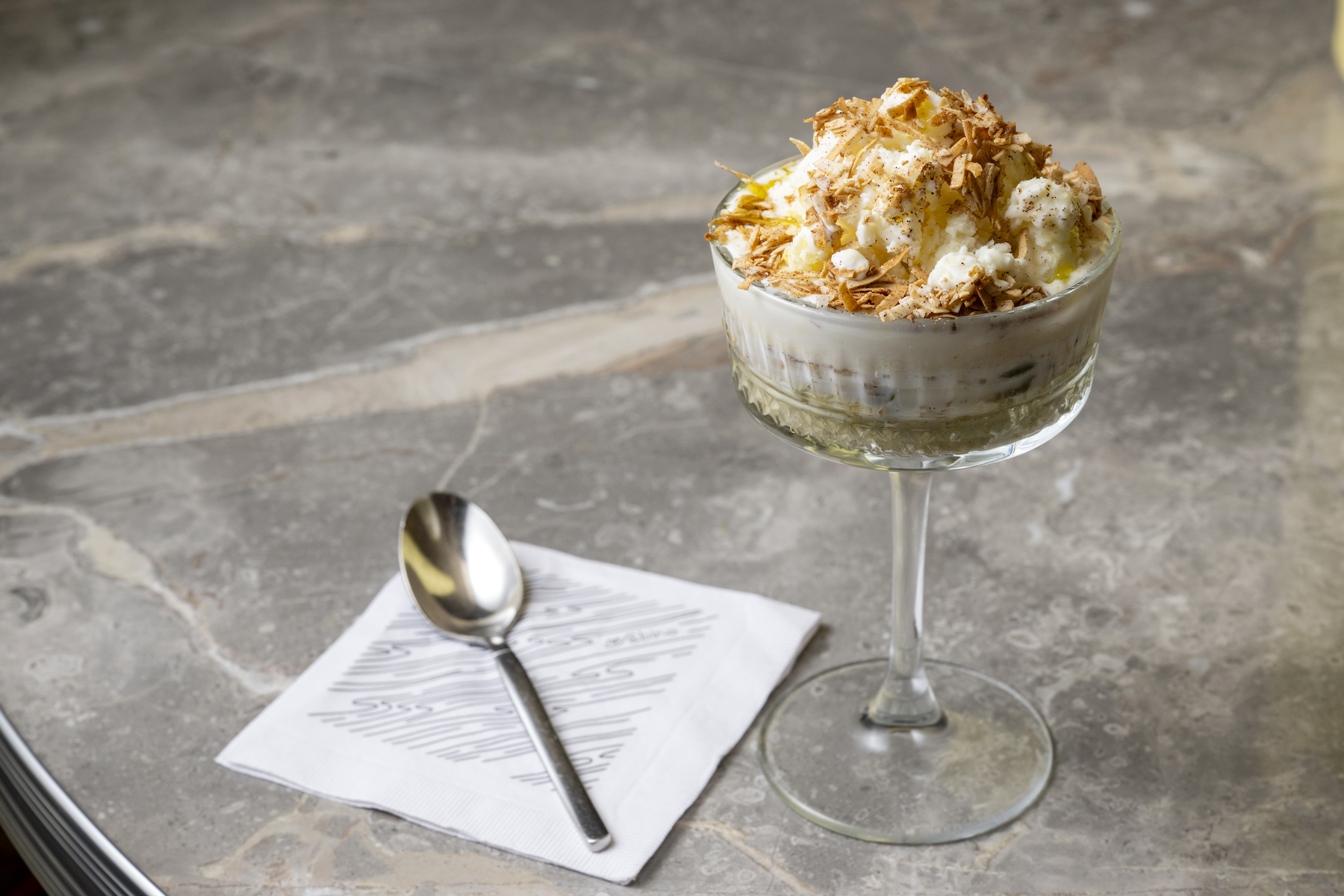
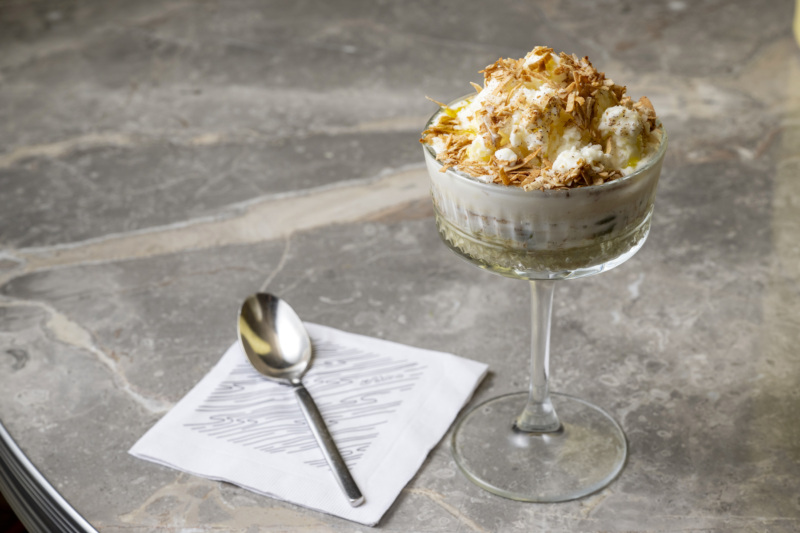
“One of my favorite desserts of all time is [Filipino] halo-halo,” says Rito. “I also love [Korean] bingsu, and this has elements of both of those, with little bits of panna cotta. It’s a very, very loose riff on those desserts.” The dish, served in a glass, is made up of multiple layers.
Those layers include: a panna cotta made from coconut milk and Thai toasted rice powder; Macapuno (a sweetened type of coconut from the Philippines); cinnamon-toasted coconut; candied Sicilian pistachios from Bronte (“the best in the world that you can get”); and a sticky pistachio rice pudding that’s loosely based off a Sicilian rice pie that Rito’s grandfather used to make.
“He was Sicilian, and he was a baker, and he started a bakery in Cleveland, where I’m from,” says Rito. “He used to make this rice pie only at Easter time and it was one of my favorite things to look forward to.”
Finally, the panna cotta gets topped with a citrus-mascarpone granita, and finished with toasted coconut and lemon agrumato oil. The result is “very textural, with lots of different temperatures and textures,” says Rito.
6. Whatever you do, come hungry.
Most of all, both Rito and Tacinelli hope San Sabino will be a place that diners will want to come back to again and again. And they don’t want folks to feel deterred by long lines or hard-to-get reservations.
“We want everyone to feel like they belong,” says Rito. “It might be difficult to get into because it’s roughly the same size as Don Angie, but I hope that, for the people who come, I hope they know we’re just trying to make really fun, delicious food that has some surprising flavor profiles and combinations of ingredients.”
“It’s interesting, but approachable,” adds Tacinelli.
San Sabino is open Tuesdays through Sundays from 5 to 11 p.m. with Monday service and lunch to follow soon.
Deanna Ting is Resy’s New York Editor. Follow her on Instagram and X (formerly Twitter). Follow Resy, too.



